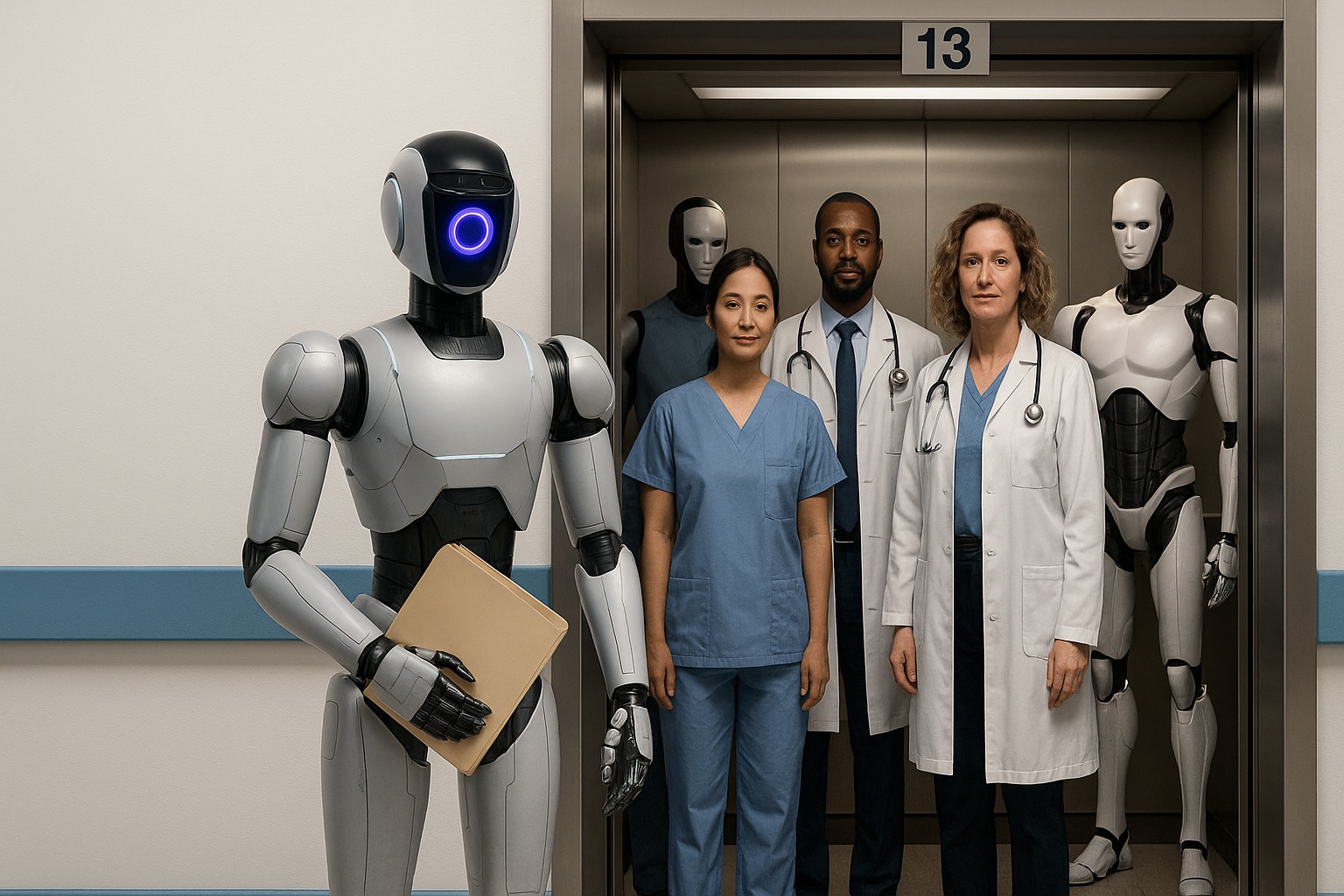Humanoid robots are no longer science fiction. They’re getting built, getting smarter, and dropping in cost.
We’re entering a new phase of the automation age: robots with general-purpose bodies, trained by AI, operating around the clock, and on track to hit price points that make them viable for mass deployment. Quietly, the pieces are falling into place.
Why 24/7 Robots Matter
This is less about what the robots can do today, and more about what they let companies imagine tomorrow.
One robot working three shifts per day could replace multiple human roles. That shifts the economics.
Basic labor math:
-
$25/hour × 24 hours = $600/day
-
$600/day × 365 = $219,000/year (three-shift labor)
-
A robot priced at $25,000 – with minimal upkeep – becomes compelling fast
Of course, that’s an oversimplification. It doesn’t account for electricity, maintenance, software updates, safety risks, or the need for human oversight. But it shows why the incentive exists. Elon Musk, for example, has stated publicly that Tesla’s goal is to price its Optimus robot in the $20,000 to $25,000 range.
That price (if achieved) could ignite a purchasing wave across multiple industries.
Who’s Already Building?
This month, X Square (a Chinese robotics startup) announced a $140 million Series A+ funding round, led by backers including Alibaba Cloud, Meituan, Legend Capital, and others.
Their Quanta X2 robot is already being used in commercial pilots, including:
-
Schools
-
Retirement communities
-
Hotels
While full-scale hospital and warehouse deployments remain limited, their roadmap points toward broad logistics and healthcare use cases in the near future.
Their stated ambition: bring the unit price of their humanoid robots down from ~$80,000 today to ~$10,000 in 3-5 years.
That’s not a guarantee. But it shows where the industry is headed.
The Real Use Cases Will Start Quietly
Forget the sci-fi launch videos. The first use cases for humanoid robots are pragmatic and unglamorous.
Think:
-
Hospital runners delivering medicine between wings
-
Janitorial night shifts in office buildings
-
Warehouse shelf stocking on low-traffic nights
-
Room service in mid-tier hotels
-
Back-of-house restaurant duties
It’s the stuff no one wants to do and no one can keep staffed. That’s where robots walk in.
What Happens When Robots Can Learn Like ChatGPT?
The next evolution isn’t just in the body. It’s in the mind.
The moment AI systems like GPT-5 can be paired with robots in real-world settings, these machines stop being pre-programmed tools and start becoming adaptable workers.
Key AI shifts:
-
Robots observe humans and learn by imitation
-
You can issue verbal instructions, not code
-
Robots begin handling nuance, not just repetition
This doesn’t require Artificial General Intelligence. It requires task-specific learning powered by foundation models. And we’re already seeing the early signs in lab settings.
Who’s in the Race?
| Robot | Current Price | Target Price | Notable Notes |
|---|---|---|---|
| X Square Quanta X2 | ~$80K | ~$10K (goal, 3–5 yrs) | Deployed in select pilots (schools, hotels) |
| Tesla Optimus | Not commercially sold | ~$25K (goal) | Demonstrated in Tesla factory; no sales yet |
| Boston Dynamics Atlas | R&D only | N/A | Advanced motion; not for sale |
When It Hits, It Won’t Look Dramatic
You won’t notice the revolution at first. It’ll be a robot walking a slow loop at 2am in a hospital. A box being pushed onto a loading dock. An elevator door held open by something not human.
But step by step, shift by shift, the cost curves are crossing. AI is moving into the physical world.
And when robots can walk, learn, and work, quietly and affordably, they don’t just change industries. They will change all of our expectations.








